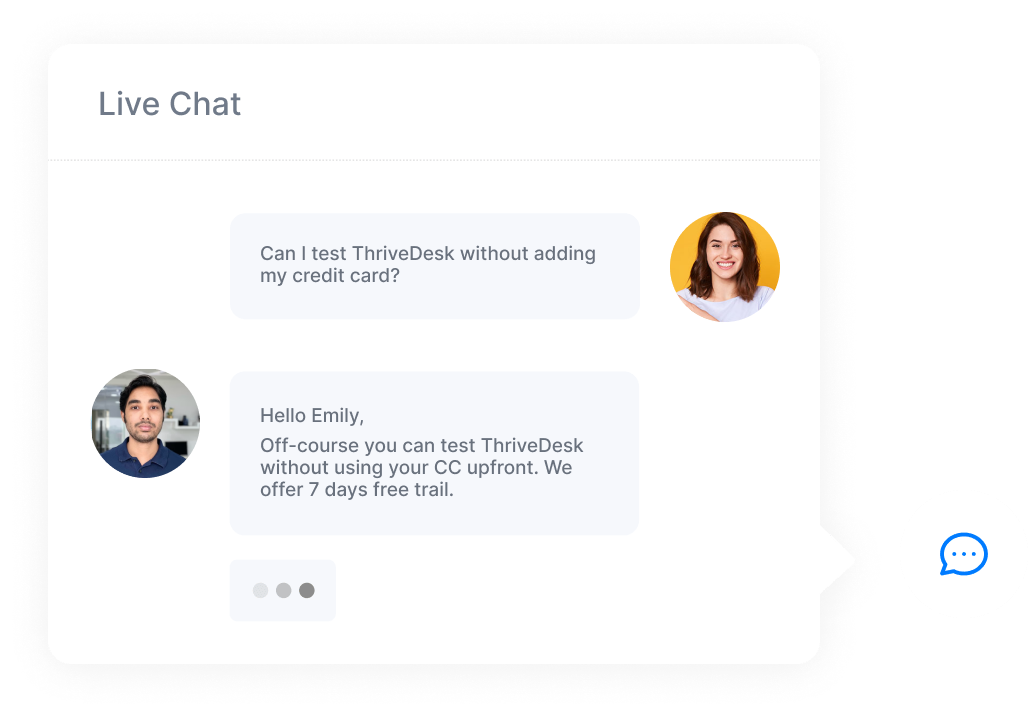A Customer Service Representative (CSR) is the first contact for customers needing help with a company’s products or services. They handle inquiries, solve problems, and ensure customer happiness. CSRs maintain good relations and uphold the company’s reputation. Their tasks include managing interactions, addressing complaints, and finding solutions to guarantee a smooth customer experience and build brand loyalty.
To be a good customer representative is nothing short of being a superhero.
This statement holds true for those who truly immerse themselves in the world of customer service. Customer service is not for the faint-hearted. It demands a host of qualities, all underpinned by a burning passion to solve problems for people.
But how can you consistently deliver top-notch service day in and day out? Read on to find out.
The Painful Truth About Mediocre Customer Service
Delivering dull customer service experiences just doesn’t cut it anymore. In today’s experience economy, buyers have endless choices and sky-high expectations.
A single negative interaction can send them into your competitors’ arms without a second thought.
Sustained bad customer service experiences result in 73% of customers churning and switching to a competitor.
As you can see, the cost of poor service is high —high customer churn rates, tarnished brand reputations, and lost revenue opportunities. But the intangible costs are high, too — dissatisfied employees, missed upselling chances, and a bruised corporate culture.
Stellar service is the new marketing. It’s how you differentiate to stay ahead of the pack.
While your competitors are busy treating buyers like numbers, you could craft delightful customer experiences that foster engagement, loyalty, and praise (free word-of-mouth marketing! 😁).
So, are you unknowingly leaving customers dissatisfied and hurting your company’s profits?
If this is a concern you share, then you’re in the right place.
What are The Qualities of a Good Customer Service Representative?

The hallmark of a thriving business lies in its customer base. Happy customers translate to brand loyalty, positive word-of-mouth, and success.
However, Good customer service representatives are the essential building blocks of a robust and beloved customer service team.
88% of customers directly stated good customer service as their reason for repeat purchases.
Good customer service reps are empathetic listeners, resourceful problem-solvers, and clear communicators who turn customer interactions into positive experiences.
They are unwavering advocates for customer needs within the company, ensuring every concern is addressed with respect and efficiency.
However, becoming an expert customer service rep isn’t about magic but mastering a specific set of skills.
15 Uncompromising Qualities of a Good Customer Service Representative

Here are the top 15 uncompromising qualities that will set you apart from your customers.
1. Active Listening
We’ve all experienced this in day-to-day conversations with ourselves or the people we’re talking to.
That incessant need to get our word in during a conversation. This is extremely problematic as it results in you listening to reply and not actually listening to understand.
This problem can be the same for customer service. The foundation of any successful customer interaction is truly hearing the customer.
Active listening goes beyond simply waiting for your turn to speak. It’s about being attentive to the customer’s issue, demonstrating genuine interest, clarifying concerns, and ensuring you fully grasp the situation.
Checklist:
- Give the customer your undivided attention: Make eye contact, put away distractions like your phone, and lean in slightly to show you’re engaged.
- Use nonverbal cues: Nodding, smiling appropriately, and maintaining open body language all send a message that you’re present and listening.
- Paraphrase key points: Briefly summarize what you’ve heard to confirm understanding. Phrases like “So what you’re saying is…” or “If I understand correctly…” show you’re paying attention and avoid misunderstandings.
- Avoid interrupting: Let the customer fully explain their issue before offering solutions or jumping to conclusions.
2. Empathy
96% of customers cite empathy as the key quality of any good customer service rep.
Customer service is all about human connection. Customers are often frustrated, confused, or disappointed when they contact us. Empathy is the key to acknowledging their feelings and building rapport.
Contrary to popular belief, empathy can be a learned skill in customer service.
You may occasionally miss the mark and misread customer emotions, but with enough exposure to different customer service situations, you’ll eventually start to notice the patterns.
Even the most emotionally tone-deaf person can be trained to pick up patterns, such as certain things angry customers say or how frustrated customers talk.
Checklist:
- Acknowledge their emotions: Validate their frustration by saying things like “I understand this must be frustrating” or “It sounds like you’re disappointed.”
- Use empathetic language: Phrases like “I can see how…” or “That would be upsetting for me too” show you’re putting yourself in their shoes.
- Focus on solutions, not blame: Don’t dwell on how the problem arose. Instead, shift the focus to finding an effective way to resolve it.
- Maintain a respectful and professional tone: Empathy doesn’t mean losing your composure even in heated situations. Speak calmly and avoid negativity.
3. Patience
Customer service can test the limits of your patience. You might encounter hundreds if not thousands of frustrated callers, complex issues, and unexpected challenges.
In this sea of potential stress, patience is your anchor.
You, as a customer service rep, must, and I mean MUST, learn to grow a thick skin. Returning to empathy, you must remember that your customer has no personal vendetta against you for the most part.
Yes, some customers are generally mean, but you must learn to take that seriously. If you’re having a bad day, you may be subjected to an outpouring of insults throughout the day, but your own solitude must always remain undisturbed.
You must channel the old adage: Sticks and stones will break my bones, but words will never harm me.”
Checklist:
- Take a deep breath: When emotions run high, take a moment to compose yourself. A calm demeanor fosters trust and allows you to think clearly.
- Actively listen without interrupting: Let the customer vent their frustrations without interjecting. This allows them to feel heard and often leads to a clearer picture of the problem.
- Offer reassurance: Let them know you’re there to help and committed to finding a solution. Phrases like “I’m here to work with you on this” or “We’ll get to the bottom of this together” can go a long way.
- Maintain a positive attitude: Your tone sets the pace for the interaction. Focus on solutions and avoid getting bogged down by negativity.
4. Customer Advocacy
The best customer service reps aren’t just problem solvers but customer advocates. They understand that a customer’s satisfaction is paramount to the company’s success, and they go the extra mile to ensure their needs are met.
Just do a quick visualization exercise:
How would you feel if that long-awaited wedding dress you ordered didn’t arrive on time, or maybe the electric guitar you ordered for your son’s 18th birthday arrived damaged? It’s not a fun time, is it?
One of the hardest things to do is make the customer feel you are not the enemy. That you are on their team. If you can do this, 90% of the battle is won.
Checklist:
- See things from the customer’s perspective: Approach every interaction by considering what outcome would be most beneficial for the customer.
- Be willing to go the extra mile: Don’t be afraid to suggest solutions outside the box or escalate an issue if necessary to achieve a truly satisfying resolution.
- Provide clear explanations: If a policy or procedure can’t be bent, explain the reasoning behind it in a way that’s easy to understand.
- Offer additional resources: If the issue requires further action, connect them with relevant departments, FAQs, or helpful documents.
5. Clear and Concise Communication
Firstly, you must understand that customers don’t want to come to customer service. Their first expectations will always be that the service or the product works as advertised.
So when they do turn up to customer service, they’re usually looking for the least intensive and quick solution.
Stuttering through terms and services and putting them on hold while you struggle to look up information that you should have memorized is not the way to go about it.
Exceptional customer service hinges on clear and concise communication. You need to be able to explain complex information, navigate technical jargon, and ensure the customer understands the next steps as clearly as possible.
Checklist:
- Speak in plain language: Avoid technical terms or industry jargon that might confuse the customer. Explain things in a way that’s easy to understand.
- Focus on key points: Don’t overload the customer with information. Identify the most important details and explain them clearly.
- Use active voice: Phrases like “We can offer…” or “I can walk you through…” are more engaging than passive voice constructions.
- Confirm understanding: Periodically ask clarifying questions or paraphrase what you’ve explained to ensure the message is clear.
6. Professional Demeanor
If you call the customer service of any reputed company, you’ll always find that the reps have a particular way of talking. Their tone is clear, concise, and respectful, delivered in an almost robotic yet warm tone of voice.
You won’t find them using informal language, stuttering in their delivery, or doing anything that might impact the company’s reputation because they know that, at that moment, they are not just the customer service rep. They are the link between the customer and the business.
This is what’s called professional demeanor.
Customer service interactions reflect your company’s image. Maintaining a professional demeanor throughout every interaction fosters trust and creates a positive experience for the customer.
Checklist:
- Use a courteous and respectful tone: Even in frustrating situations, maintain a calm and professional voice. Address customers by their preferred name (if provided) and avoid sarcasm or negativity.
- Mind your body language: Project confidence and professionalism through your posture. Sit up straight, avoid fidgeting, and maintain appropriate eye contact.
- Acknowledge mistakes gracefully: If you make an error, apologize sincerely and take ownership of the situation. Focus on resolving the issue and preventing it from happening again.
- Maintain a positive attitude: A smile (even over the phone, your voice conveys it!) and an upbeat tone can significantly impact the customer’s experience.
7. Active Voice
Using active voice is a powerful communication technique in customer interactions. Active voice means framing statements with the subject performing the action, such as “I have resolved your issue.”
This is more direct than passive voice, like “Your issue has been resolved.”
Active voice is crucial for several reasons:
- It conveys confidence and authority, putting customers at ease knowing they are in capable hands.
- It promotes clarity by explicitly stating who is doing what, avoiding any ambiguity.
- It facilitates a two-way dialogue by naturally inviting the customer to continue the conversation.
- It allows smooth narration when guiding customers through procedures using phrases like “First I will…Next, you will…”
An active voice aligns with key customer service principles – clarity, confidence, and accountability.
Representatives should leverage this technique to take ownership, manage expectations clearly, and enable a collaborative discussion. Guiding conversations with an active voice ensures customers feel their needs are truly understood.
Checklist:
- Use action verbs: Instead of saying “The solution will be explained,” say “I can explain the solution to you now.” This creates a more dynamic and engaging conversation.
- Ask open-ended questions: Questions like “How can I further assist you today?” or “Can you tell me more about what happened?” encourage the customer to provide details and allow you to tailor your approach.
- Offer clear next steps: Don’t leave the customer hanging. Explain what will happen next, who they can contact if needed, and a timeframe for resolution (when possible).
- Summarize key points: Before ending the call, briefly recap the solution or next steps to ensure everyone is on the same page.
8. Resourcefulness
In customer service, there will be times when standard solutions don’t fit the bill. This is where resourcefulness shines. A resourceful rep can think creatively and find unique ways to address complex issues.
Resourcefulness allows representatives to find innovative solutions by leveraging all available knowledge and tools. Key qualities of resourcefulness include persistence, creative thinking, comprehensive knowledge, and taking initiative beyond scripts.
Showcasing resourcefulness elevates the customer experience. It signals a thorough investigation and personalized resolution, building confidence and loyalty. While initially requiring more effort, it prevents repeat issues in the long term.
Checklist:
- Think outside the box: Be bold and explore unconventional solutions that fall within company policy.
- Research available resources: Familiarize yourself with all the tools and resources at your disposal, from knowledge bases to internal support channels.
- Brainstorm with colleagues: If stuck, don’t hesitate to consult with teammates for a fresh perspective. Two minds (or more!) are often better than one.
- Focus on customer satisfaction: The ultimate goal is to find a resolution that leaves the customer feeling valued and heard.
9. Taking Initiative
A customer service champion doesn’t wait for problems to land in their lap; they take the initiative. This means proactively seeking solutions, anticipating customer needs, and driving the resolution forward.
Taking the initiative allows customer service reps to provide exceptional, personalized experiences. A proactive approach means identifying and addressing unstated needs based on customer cues.
Small gestures like tailoring recommendations based on preferences or following up after resolutions demonstrate attentiveness.
Checklist:
- Don’t wait for prompting: Actively listen for opportunities to go the extra mile, even if it’s something seemingly small like offering additional information or suggesting alternative solutions.
- Identify potential roadblocks: As you gather information, anticipate potential challenges and proactively offer solutions before they become obstacles.
- Suggest next steps: Don’t wait for the customer to ask what happens next. Propose a clear path forward, including estimated timelines and who they can contact for further assistance.
- Follow up if necessary: For complex issues requiring extended resolution times, a quick follow-up call or email demonstrates you haven’t forgotten about them.
10. Attention to Detail
This is also one of the most difficult aspects of customer service because it requires immense focus.
In customer service, even minor mistakes can escalate into larger issues. Paying close attention to details like order numbers, spellings of names, etc., allows a rep to catch small errors before they become bigger issues for the customer.
Paying attention to conversational details allows adding personal touches, like referring to mentioned hobbies/interests or following up on how an event the customer discussed went.
It is an immensely hard skill to master if it doesn’t come naturally to you. But if you master it, 5-star reviews will rain down on you by the dozen.
Checklist:
- Actively listen and take clear notes: Pay close attention to dates, names, account numbers, and any other critical details mentioned by the customer.
- Double-check information: Before finalizing any actions, take a moment to verify all details, such as contact information or order specifics.
- Proofread communication: Whether it’s an email confirmation or written notes, ensure all information is accurate and free of typos.
- Maintain clear documentation: Keep a well-organized record of the interaction, including the issue, resolution steps, and any follow-up actions.
11. Product/Service Knowledge
This shouldn’t even be on this list, as it is the first prerequisite for anyone looking to work in customer service.
You must have an encyclopedic knowledge of your product or service. Know it inside out and take its features and quirks to heart.
Always stay on top of the latest developments on the product/service. Memorize the terms of service like your life depended on it because exceptional customers will try to exploit any chink in your armor they can find.
It’s not all doom and gloom because by becoming a product/service knowledge guru, you can answer questions confidently, recommend solutions effectively, and build trust with your customers.
Top-notch product knowledge automatically enhances some of the previous qualities we’ve discussed.
Checklist:
- Master the basics: Thoroughly understand the features, benefits, and limitations of your product or service.
- Stay updated on changes: Familiarize yourself with any recent updates, new features, or policy modifications.
- Anticipate common questions: Research frequently asked questions and prepare clear, concise answers.
- Seek additional resources: If you encounter an unfamiliar topic, utilize internal knowledge bases, training materials, or consult with product specialists for further clarification.
12. Continuous Learning
The world of customer service is constantly evolving. New technologies emerge, customer expectations change, and companies adapt their offerings.
To stay ahead of the curve and remain a customer service champion, a growth mindset focused on continuous learning is essential.
Checklist:
- Embrace learning opportunities: Participate in company-provided training programs, webinars, or online courses to stay updated on industry trends and best practices.
- Seek out new knowledge: Read industry publications, blogs, or attend relevant conferences to broaden your understanding of customer service strategies.
- Learn from your experiences: After each interaction, take a moment to reflect on what went well and what could be improved. Use these insights to refine your approach in the future.
- Share knowledge with colleagues: Become a resource for your teammates by sharing what you’ve learned through training or personal research. This fosters collaboration and a culture of continuous learning within the team.
13. Adaptability
There are multiple aspects of adaptability that a good customer service rep needs to master.
First one: It goes without saying that if you work in a busy customer service department, you will be exposed to hundreds, if not thousands, of different situations in a day.
This will test your rigor, mental acuity, toughness, patience, and all other aspects.
Let’s say you just dealt with a customer who was all fire and brimstone for some sort of lapse in service or product. During the interaction, you probably were stretched emotionally. What do you think will happen if you approach the next customer with the same energy and tone?
In some ways, you must be like an elastic band. No matter which direction you’re yanked in, you must always be able to return to neutral before moving on to the next customer.
Second one: At any given time, you might be solving multiple issues across multiple conversations with different customers. Here, adaptability is a crucial skill.
Talking to each customer in a personalized tone while maintaining an understanding of their problem and resonating with their emotions while doing this for multiple customers concurrently is the ultimate mark of an adaptable rep.
Checklist:
- Read the situation: Pay attention to verbal and nonverbal cues to understand the customer’s emotional state and communication preferences.
- Adjust your communication style: Speak slowly and clearly for those who seem flustered, or use a more technical vocabulary for customers seeking in-depth explanations.
- Be flexible in your approach: Don’t be afraid to deviate from a script if the situation calls for it. Personalize the interaction to build rapport and create a more positive experience.
- Embrace different communication channels: Whether it’s email, phone, or live chat, adapt your communication style to suit the chosen platform and the customer’s comfort level.
14. Positive Attitude
There’s this concept in psychology called the Confirmation Bias.
It basically says that our beliefs about ourselves and our circumstances can influence our behavior and outcomes in a way that confirms those beliefs. What do I mean by this? Let me explain.
If you always think negatively, you’ll experience everything through the lens of negativity. Conversely, if you stay positive all the time, you’ll experience positivity all the time, and the thing about positivity is that it radiates.
A positive attitude is the cornerstone of exceptional customer service. If you’re happy, cheery, and warm when you greet the customer, they will mirror your emotions.
This infectious streak can leave a lasting impression on every customer interaction.
Checklist:
- Start your day with a smile: A positive mindset sets the tone for your interactions. Begin your shift by focusing on the opportunity to make a difference for each customer.
- Focus on solutions, not problems: Acknowledge challenges, but then shift the focus towards finding effective solutions.
- Use positive language: Phrases like “certainly,” “of course,” and “I’m happy to help” convey a willingness to assist and create a more welcoming atmosphere.
- Maintaining composure under pressure: Avoid negativity or frustration, even in difficult situations. Project a calm and confident demeanor that assures the customer you’re there to navigate the issue together.
15. Building Trust
I’ve already mentioned that you must put the customer at ease and make him/her understand that you are on their side and you want nothing else but to solve their issue for them.
That was one of the requirements of building trust. Trust is a funny thing. So fragile yet so enormously difficult to win. Remember it is many orders of magnitude more difficult to convert a new customer than to retain an old one.
It’s all down to trust. Once you can win the customer’s trust, it leaves an imprint on them.
Customer service interactions aren’t one-time transactions but opportunities to build trust and foster lasting relationships. By prioritizing trust, you become a reliable source of support and a champion for the customer’s needs within the company.
Checklist:
- Be honest and transparent: If you don’t have the answer, admit it and offer to find it. Don’t make promises you can’t keep.
- Follow through on commitments: If you say you’ll do something, make sure you do it. This builds trust and demonstrates your reliability.
- Respect customer privacy: Handle all customer information with care and adhere to company policies regarding data security.
- Empower customers with knowledge: Provide clear explanations and resources to equip them with the information they need to make informed decisions.
ThriveDesk: Helping You Craft Positive Customer Experiences
Equipping yourself with the right tools is essential for excelling in customer service.
ThriveDesk is a powerful customer service platform designed to empower reps like you to uphold the qualities we’ve discussed and become true customer service champions.
Here’s how some of ThriveDesk’s features can help you shine:
Shared Inbox
ThriveDesk’s shared inbox consolidates all customer interactions (phone, email, chat) into a single platform.
Conversations are threaded, allowing you to easily follow the history and context of each issue. This fosters active listening by providing all the information you need to understand the customer’s situation.
Seamless collaboration
ThriveDesk’s ticketing system goes beyond categorization and prioritization.
Internal notes allow you to collaborate seamlessly with colleagues on complex issues.
Share insights, brainstorm solutions, and advocate more effectively for the customer’s needs – all within the platform. This ensures efficient teamwork and empowers you to truly champion their cause.
Streamlined Workflows
ThriveDesk offers powerful canned response functionality, a lifesaver during high-volume periods.
Create pre-written responses to frequently asked questions or common scenarios. This saves time and ensures consistent, accurate information is delivered to every customer.
With streamlined workflows, you can maintain your composure even under pressure, allowing you to focus on more personalized interactions when needed.
Knowledge Base Functionality
ThriveDesk integrates seamlessly with popular knowledge base solutions. Imagine having instant access to product manuals, FAQs, and other helpful resources directly within the platform.
This equips you to provide clear explanations and accurate information to customers, building trust and resolving issues faster.
Live Chat
Unlike juggling multiple interfaces, ThriveDesk boasts a custom-built live chat assistant specifically designed for real-time customer interactions.
This translates to a unified dashboard where all tickets reside, drastically reducing support time and streamlining communication.
AI Reply Editor
ThriveDesk takes efficiency to a whole new level with its innovative AI reply editor.
This intelligent feature analyzes the customer’s message and suggests contextually relevant responses, saving you time and effort.
You can leverage these suggestions to craft professional, accurate replies instantly, ensuring faster communication without sacrificing quality.
WP Portal for WordPress Users
For WordPress users, ThriveDesk offers a unique advantage: WP Portal. This tailor-made customer service portal integrates seamlessly with your WordPress site, giving your customers direct access to their support history and resources.
Imagine the convenience – customers can browse knowledge base articles, submit new tickets, and track the progress of existing issues, all within the familiar environment of your website.
This empowers your customers to take a proactive role in resolving issues and fosters a sense of self-service, freeing you up to focus on more complex inquiries.
Additional Features for Exceptional Service
- Quick Replies: Save time and ensure consistency with pre-written responses to common questions.
- Seamless File Sharing: Effortlessly share documents and images directly within the chat window for smooth troubleshooting.
- Customer Satisfaction Surveys: Gather valuable feedback to continuously improve your customer service approach.
- Mobile App: Provide exceptional support anytime, anywhere with the convenient ThriveDesk mobile app.
Don’t leave your service reputation to chance.
Try ThriveDesk to ensure every customer walks away feeling engaged, understood, and delighted from start to finish. This is how you earn rave reviews and furious loyalty.

Your Customer Service Companion
ThriveDesk, your trusted companion for customer service excellence. Enhance your support capabilities effortlessly. Join now for seamless interactions.
Final Thoughts
Exceptional customer service isn’t simply about resolving issues; it’s about building trust, fostering loyalty, and creating positive brand experiences.
By mastering the 15 qualities outlined above, you can transform yourself from a good customer service representative into a champion – someone who consistently goes the extra mile, advocates for customer needs, and leaves a lasting positive impression on every interaction.
Remember, the human touch is irreplaceable. A genuine smile, a patient ear, and a willingness to help can turn even the most frustrating situation into a positive one. So, embrace these qualities, hone your skills, and become a champion who embodies the heart and soul of exceptional customer service.





